Static Stretching vs. Dynamic Stretching: Which Should You Do?
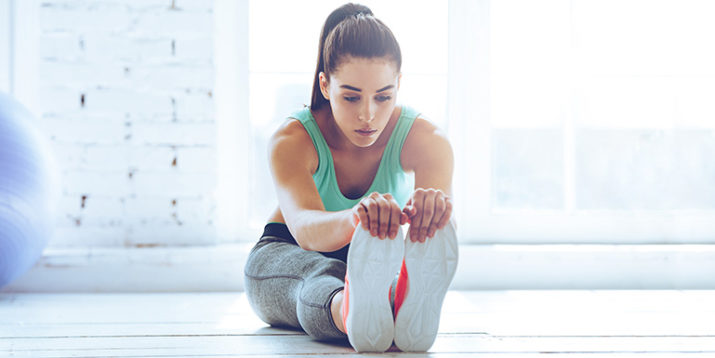
One of the biggest mistakes newcomers to fitness can make is skipping warm-up exercises before a workout. Not only is warming up valuable, it’s essential, delivering benefits beyond simply preparing your body for exercise, and extending to issues of safety and performance.
But older notions of the warm-up may compromise both, making it important to know the difference between active and passive warm-ups, static and dynamic stretching. Once you’ve settled on a workout program, budget properly for some warm-up exercises by incorporating the information below into your fitness regimen.
Static Stretching vs. Dynamic Stretching
When preparing to do any type of vigorous activity — be it playing a team sport, performing aerobic exercise, or lifting weights — you need to prepare your muscles for action. Traditionally, there have been two primary ways to do that: static stretching and active warm-up exercises.
Static stretching
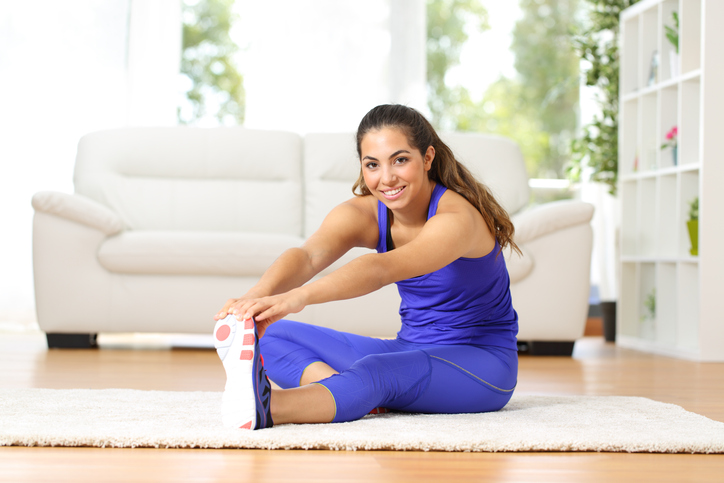
This is what you probably did in your middle school P.E. class: gradually elongating a muscle and holding it for up to 30 seconds. Think side bends or the classic hamstring stretch, where you reach for your toes while sitting on the floor. The goal of these stretches is to release tension, making muscles more pliable and less susceptible to pulls and strains.
Dynamic stretching
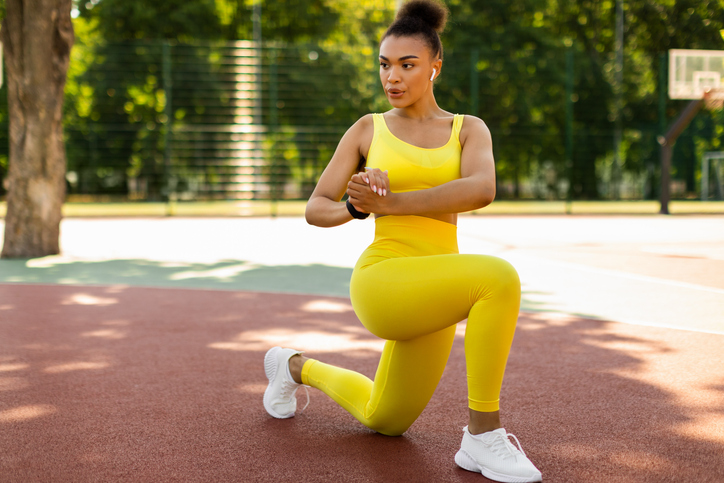
Part of the larger category of active warm-ups, this type of preparatory activity involves movement-based stretching like bodyweight lunges and trunk rotations. Additional active warm-ups include sport-specific agility drills, sprints and shuttle runs, jumping rope, jogging, and other low-impact, light effort exercises. The goal is to prime the body for action, and it’s what smart trainers and coaches now recommend that people do not only before competition, but also before every workout.
The Benefits of Active Warm-Ups
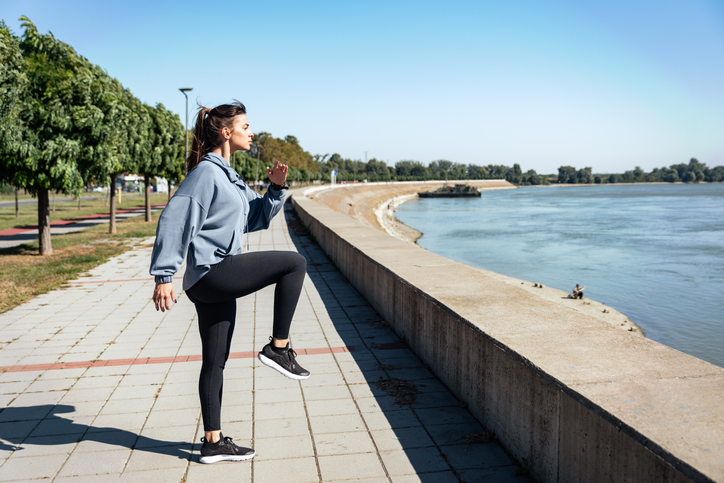
Research has found that while static stretching can provide recovery benefits when performed at the end of a workout, it can hamper performance if performed at the beginning. That’s because it relaxes muscles, sapping strength, while reducing blood flow and decreasing central nervous system activity.
Active warm-up exercises — especially those that involve dynamic stretching — have the opposite effect, boosting blood flow, activating the central nervous system, and enhancing strength, power, and range of motion. As a result, they offer a host of both immediate and long term benefits.
Active warm-ups improve performance
A 2014 systematic review of 31 studies published in the British Journal of Sports Medicine found that active warm-ups encompassing such exercises as sprints and plyometrics can enhance power and strength performance. Meanwhile shorter, static stretching not only fails to provide such a boost, but may also reduce strength. A meta-analysis of 32 studies on warming up and performance in 2010 also found that doing an active warm-up before engaging in sports yields improved performance — in this case, by 79 percent across all criteria examined.
“I have even seen runners who are doubling up in distance events on the same day run their second event better than the first,” says Brad A. Roy, Ph.D., FACHE, FACSM, FMFA, executive director of The Summit Medical Fitness Center in Kalispell, Montana. “With adequate rest, the initial event serves as an enhanced warm-up for the second event.”
Even if you aren’t playing a sport every week — or competing in two running events in a single day — doing some dynamic stretching every time you lace up for exercise can help optimize your performance and fast track your results. It doesn’t matter whether you’re exercising in your living room, pumping iron in the gym, pounding the pavement, or hitting the links with your bros on a Sunday — priming your body for action will elevate your game and accelerate your gains.
Active warm-ups prevent injury
A 2008 study of roughly 2,000 soccer players in The BMJ found that a structured warm-up program that included running, jumping, dynamic stretching, and targeted exercises for strength, balance, core stability, and hip and knee durability decreased the overall risk of injury by 35 percent, and cut severe injuries by almost half.
Scientists at Northwestern University had similar results in their 2011 study of 1,500 athletes. They found that 20 minutes of strength, balance, plyometric, and other dynamic stretching exercises before practice yielded a 65 percent reduction in gradual-onset injuries, a 56 percent reduction in acute non-contact injuries, and a 66 percent reduction in noncontact ankle sprains. More recently, a 2014 review of studies published in Orthopaedic Nursing found that tailoring a warm-up to a specific sport led to the fewest injuries and best outcomes.
6 Quick Warm-up Exercises Everyone Should Do
Although a sport-specific warm-up is always preferable, the following dynamic stretching circuit encompassing a broad range of movements can help prepare your body for just about any athletic endeavor. Perform each move for one minute prior to working out or competing.
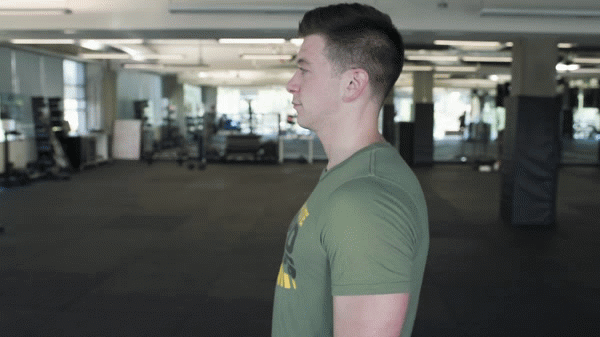
Shoulder Circle
- Stand tall with your shoulders relaxed and your arms by your sides.
- Slowly roll your shoulders in a circle (forward, up, back, down) for 30 seconds.
- Repeat in the opposite direction.
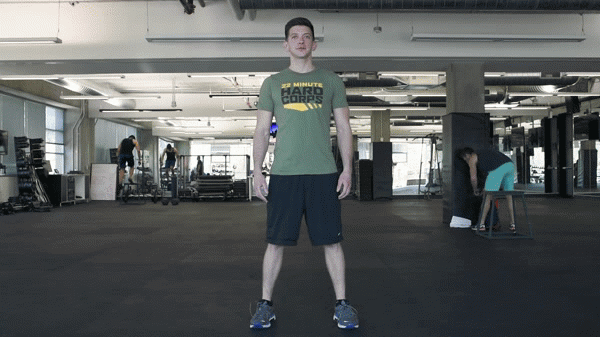
Trunk Rotation
- Stand tall with your feet hip-width apart and your knees slightly bent.
- Keeping your back straight (not arched), raise your arms straight out to your sides, and bend at the elbows.
- Keeping your knees bent, pivot on the ball of your right foot as you rotate your torso to the left and invert the motion to the right.

Standing Hip Circle
- Stand on one leg and raise the opposite knee to 90 degrees (your thigh should be parallel to the ground).
- Keeping your knee raised, open your hip, making wide circles with your leg. Continue for 30 seconds.
- Switch legs and repeat.

Leg Swing
- Stand tall with your feet together and your arms out to your sides or gripping a stable surface for balance.
- Shift your weight to your left leg and raise your right leg out to your side.
- Swing your right leg parallel with your shoulders back and forth in front of your left leg. Continue for 30 seconds. Switch legs and repeat.

Lunge
- Stand tall with your feet hip-width apart and your hands on your hips.
- Keeping your chest up, shoulders back, core braced, and back flat, take a large step forward with your right foot. Lower your body until your front thigh is parallel to the ground and your rear knee is bent 90 degrees. (It should hover a couple of inches above the ground.)
- Pause, and then reverse the movement to return to the starting position. Repeat, this time stepping forward with your left foot. Continue alternating legs.
Related: How to Do the Perfect Forward Lunge
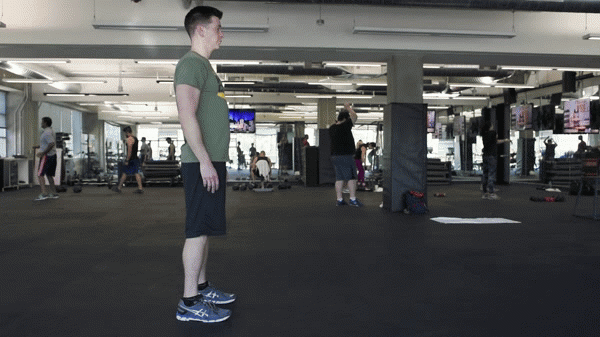
Half Squat
- Stand tall with your arms by your sides and your feet hip- to shoulder-width apart.
- Keeping your back flat and core braced, raise your arms straight out in front of you as you push your hips back, bend your knees, and lower your body until your thighs are parallel to the ground.
- Pause, and then push yourself back up to the starting position.
Related: How to do the Dumbbell Squat
Every Beachbody workout opens with a series of active warm-ups to prime you for safe and effective exercise. Stream our every-growing library via your TV set-top box or mobile device on Beachbody On Demand now!
